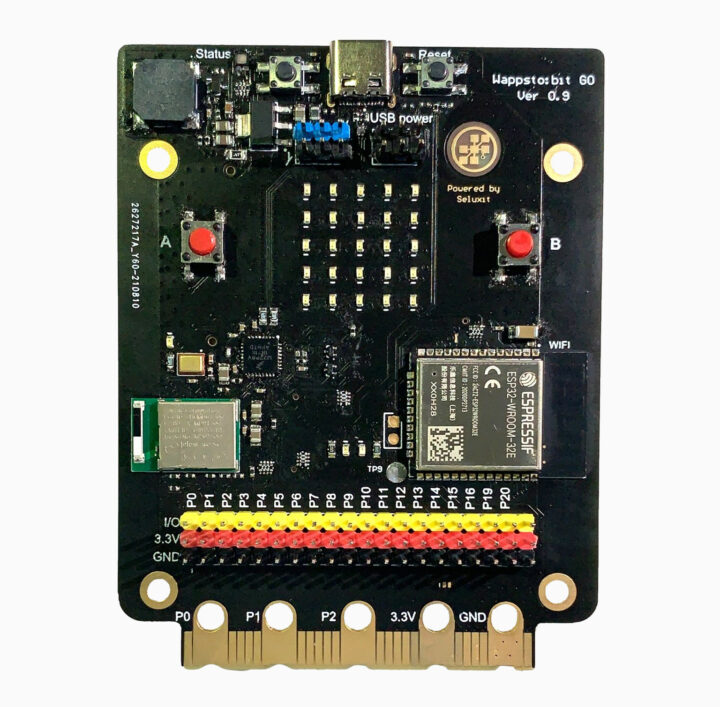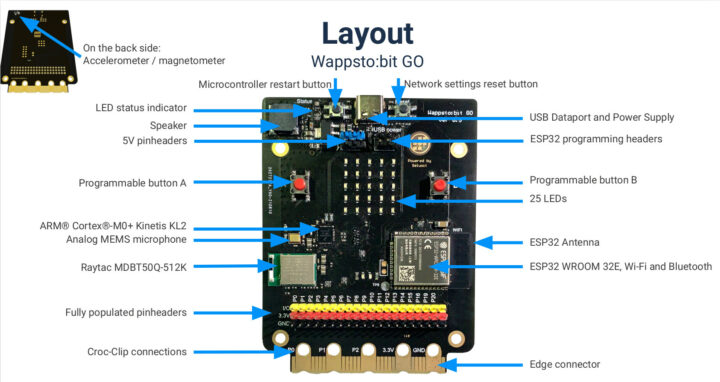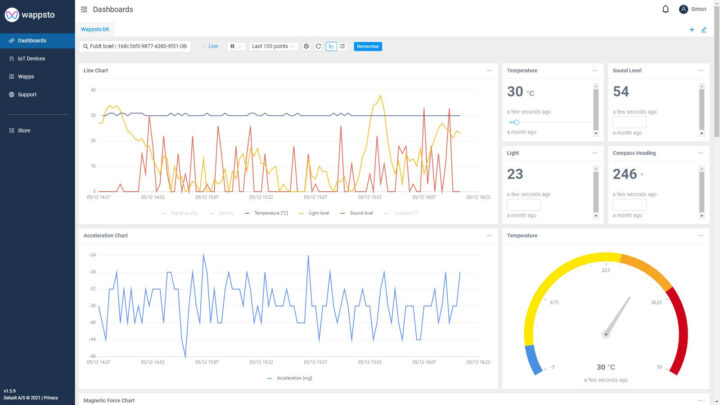Wappsto:bit GO is an ESP32 board compatible with BBC Micro:bit accessories thanks to a compatible edge connector, but adding WiFi to Bluetooth LE, and offering some extras compared to Elecrow Mbits ESP32-based BBC Micro:bit clone.
The new board is notably equipped with a wider range of sensors including a light sensor, a magnetometer, and sound sensor beside the temperature sensor and accelerometer present in the original board, and it also exposes GPIO through a more traditional 2.54-pitch header to facilitate the integration of a wider variety of add-on boards.
Wappsto:bit GO specifications:
- Wireless modules
- ESP32-WROOM-32E module with ESP32 dual-core microcontroller, 4MB flash, 2.4 GHz WiFi and Bluetooth LE connectivity, built-in PCB antenna
- Raytac MDBT50Q-512K Bluetooth 5.2 module based on nRF52833 with 512KB Flash
- MCU – NXP Kinetis KL2 Arm Cortex-M0+ microcontroller (MKL27Z256VFM4 ) with 256KB Flash (for USB port handling)
- Display – 25 LED matrix
- Sensors
- Temperature sensor, Light sensor
- Sound sensor (Knowles SPU0410LR5H-QB analog MEMS microphone)
- Magnetometer, Accelerometer, and Compass (ST LSM303AGRTR IMU)
- USB – 1x USB Type-C port for power and programming
- Expansion
- 25-pin BBC Micro:bit compatible edge connector including 5 alligator clip connectors
- 3x 20-pin headers one for GPIOs and two with 3.3V and GND signals
- Misc – Logo with capacitive touch, programmable A and B buttons, MCU reset button, network settings reset button, buzzer
- Power Supply – 5V via USB-C port, or 3.3V via edge connector + alligator clip
There are at least four MCU cores on the board. That may seem like a waste of resources, but I understand it was done to keep maximum compatibility with the BBC Micro:bit v2 board that also features a Nordic Semi nRF52833 microcontroller for Bluetooth 5.1/5.2 LE connectivity, and an NXP Kinetis K2L MCU for the USB section. The dual-core ESP32 microcontroller, programmed with Arduino, is mostly used to provide WiFi connectivity and enable programming from a web browser and cloud connectivity.
Specifically, Wappsto:bit GO can be programmed online with Microsoft MakeCode together with the Wappsto Extension, plus the mobile app available for Android and iOS for the initial configuration. Students will then be able to program the board with visual programming, JavaScript, and/or Python, and access sensor data from the Wappsto IoT platform’s dashboard.
The short video below demonstrates the workflow nicely.
The board was launched on Crowd Supply with a $6,000 funding goal and a single perk: the Wappsto:bit GO Starter Kit with the board, and a USB Type-C to USB Type-A cable for a total of $95. Shipping adds to the US, and $18 to the rest of the world. It’s quite pricey probably because the hardware is optimized for ease of use rather than lowering the costs, and also to maintain the cloud services. Deliveries are expected to start in August 2022.

Jean-Luc started CNX Software in 2010 as a part-time endeavor, before quitting his job as a software engineering manager, and starting to write daily news, and reviews full time later in 2011.
Support CNX Software! Donate via cryptocurrencies, become a Patron on Patreon, or purchase goods on Amazon or Aliexpress







